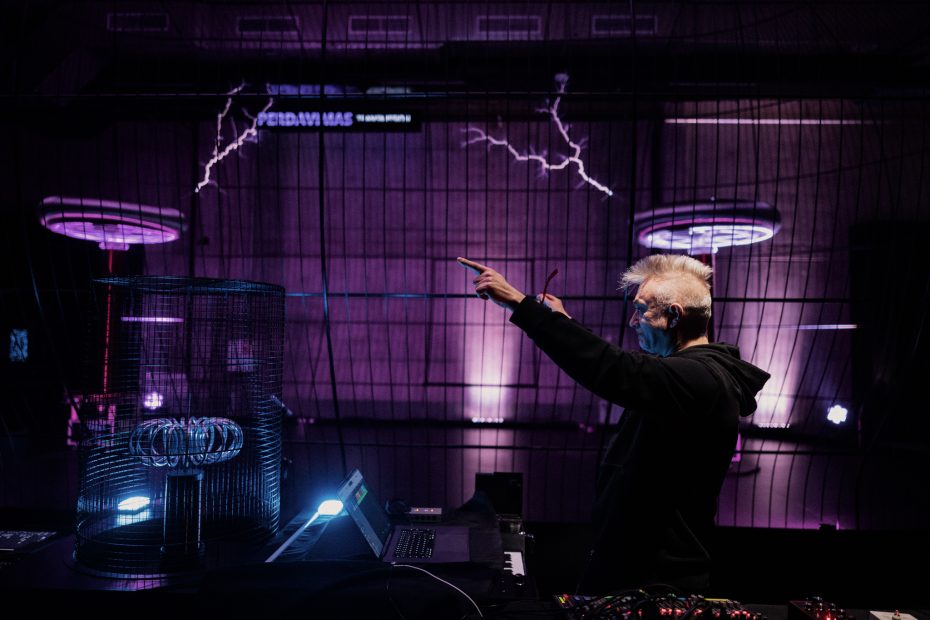In four days, the first 2,000 visitors visited the new energy exhibition of the Energy and Technology Museum, the Transformation Hall. During the opening of the exposition, a unique exhibit, Tesla coils, became an instrument – electronic music creator Andrius Mamontovas played with lightning for the first time in Lithuania. In January, guided tours about energy production, accumulation , transmission and consumption will be held in Transformation Hall. During the events, visitors will learn the most interesting facts about the life of the inventor Nikola Tesla and will be able to try lightning music for themselves.
Looking to the future
The investment project of the European Union and Vilnius City Municipality started in 2018, and over time it became more and more relevant. During the opening of the exhibition, Vilnius Mayor Remigijus Šimašius said: “We are at a breaking, turning point. Humanity consumes more and more energy every year. For the good scenario to happen, we need to make effective use of our most important resource, the human mind. I invite everyone to come to the Tranformation Hall, because our future depends on it.”
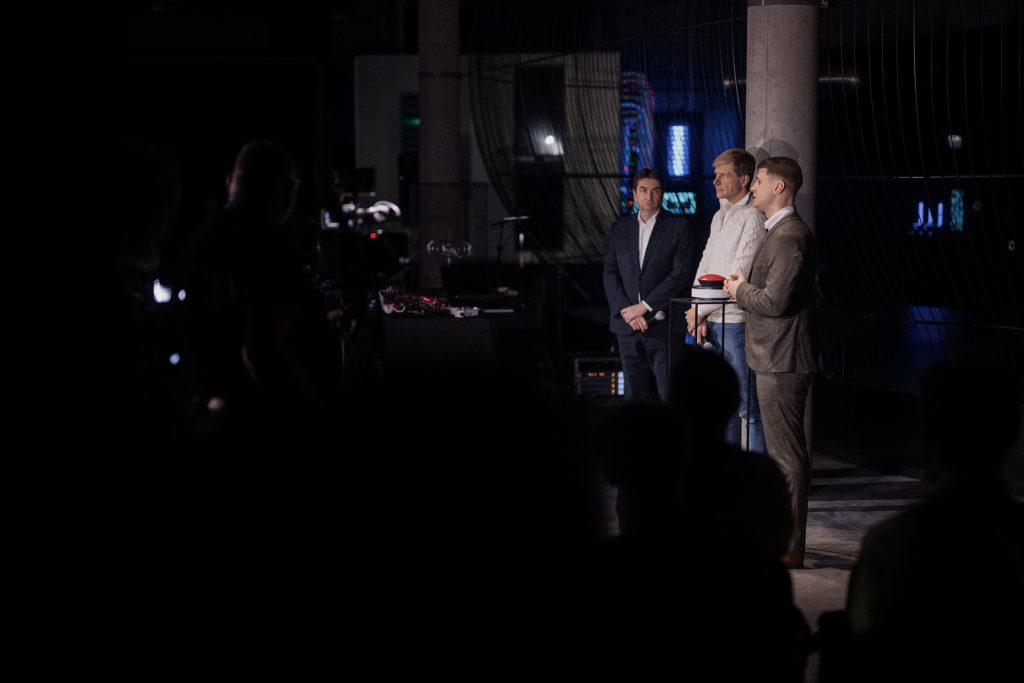

Opening of the Transformation Hall. From the left: Darius Maikštenas, Remigijus Šimašius, Mykolas Bistrickas. Photos of Energy and Technology Museum
According to Darius Maikštėnas, head of energy companies “Ignitis Group”, the oil of the future does not lie in the ground, but in renewable energy. “Similar to Norway, the Baltic countries can become one of the richest and happiest countries in Europe or the world in the next 20 years. Whether this happens will depend in large part on whether we will love physics, mathematics and science. I am happy that we already have an exhibition that is equal to the best exhibitions in the world, and its purpose is to stimulate the transformation of a young person’s mind, to interest them in exact sciences”, Maikštėnas said.
Director of the museum Mykolas Bistrickas stated that the new hall is not the end of the implemented project, on the contrary, the beginning. “Now we’ll be looking to attract as many visitors as possible and show them the interesting, relevant content we’ve created here. Finally, the old museum also needs to be renewed – we prepared a project to update the interactive physics exhibits in the “Science and Technology for Kids” hall – the old ones could go on a trip around Lithuania and the museum would become mobile, accessible to everyone”, said Bistrickas. And he added: “A project of this scale and creativity can only be implemented with a strong interdisciplinary team, which solves a difficult task with its experience and knowledge – to explain difficult things in a simple and immersive way.”


Algirdas Kaušpėdas.
Indicates the direction
Famous artists contributed to the transformations of the Energy and Technology Museum. One of them is the architect Algirdas Kaušpėdas who in 2016, proposed to form a modern extension at the entrance of the building. The architect recalled: “There was no information center, no elevator here – it was actually a museum, a museum of old technology. But the new exposition actualizes the museum, it becomes an educational center of national importance. When we are going through an energy shock, as we are at the transition, when we must change, this museum points us in the right direction.”
Kaušpėdas commended his fellow architects: “When we look at the sky at night, it is like this hall: dark, twinkling stars, tempting us and promising something. I congratulate the creators of the exposition – this mystical, mysterious environment creates a sacred feeling for us, the visitors – we want to believe in science and solve its mysteries.”
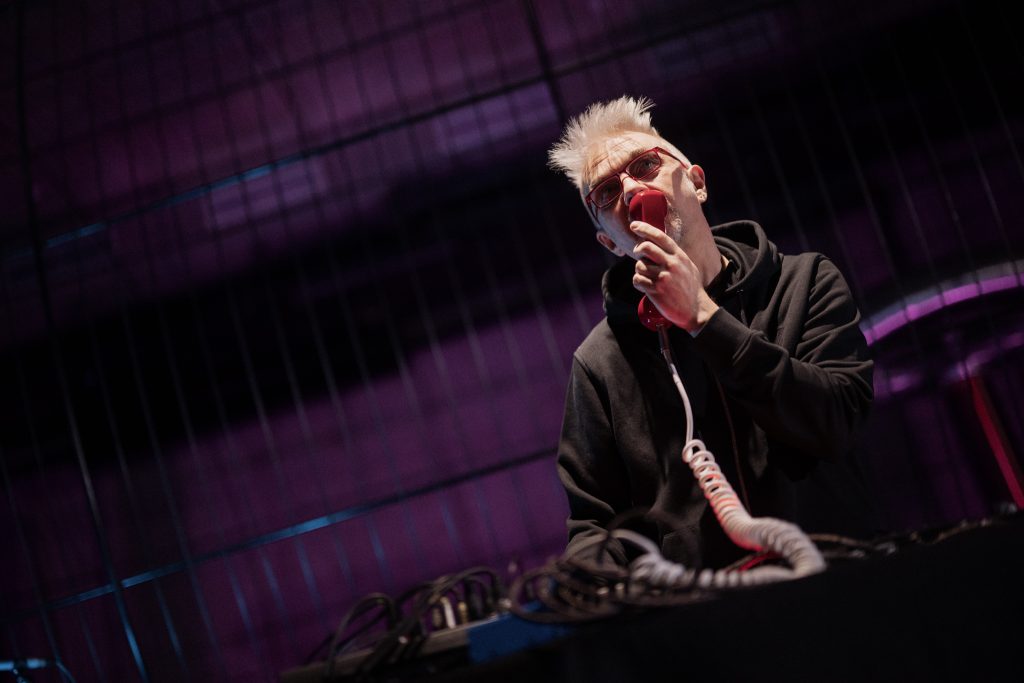

Andrius Mamontovas.
Powerful music
In autumn, Mamontovas installed the light and sound installation “Electric Diva” in the Energy and Technology Museum. It was created together with artist Jolita Vaitkutė, the installation is dedicated to the pioneer of electronic music, theremin virtuoso Clara Rockmore. Mamontovas was the initiator of the project, at that time the friendship between the museum and the artist began.
“I’m trying to imagine what such a power looked like a hundred years ago – perhaps like a manifestation of deities. We see an instrument of incredible sound, timbre, volume, which can be controlled and produce two notes at the same time, because there are two Tesla coils. At the same time, it is a grateful instrument, it makes an impression by itself, people look at it with amazed child’s eyes. Transformation Hall is a great place for experimental performances, huge possibilities will open up in the future,” Mamontovas was convinced.
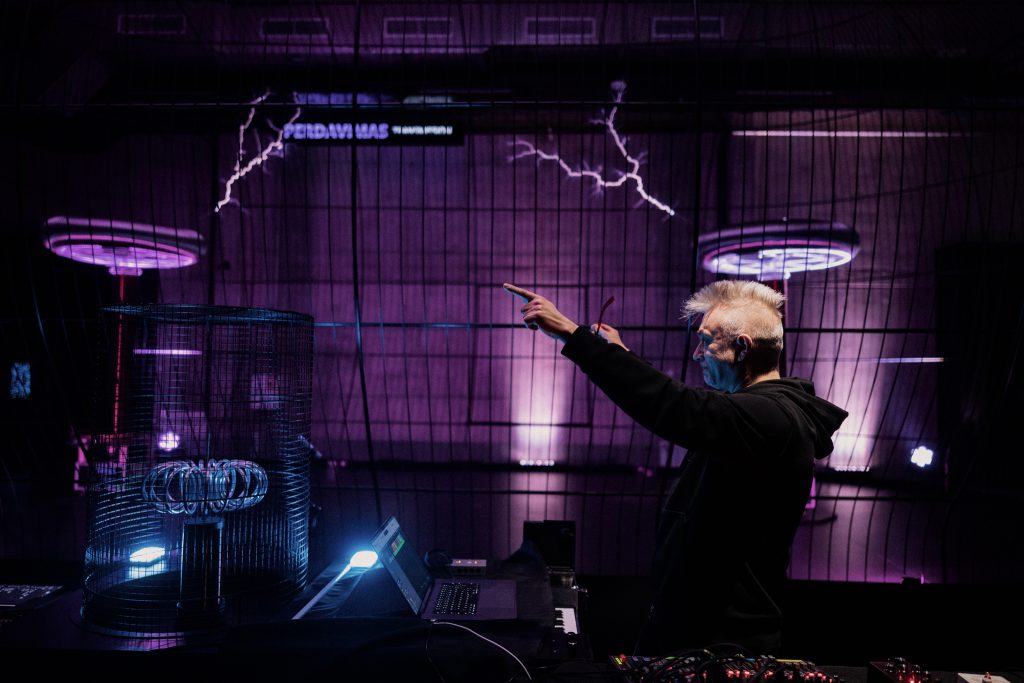

Everest for titans
The authors of the underground exposition are the architect duo Justinas Dūdėnas and Jurgis Dagelis, the architects were united by “Metro architecture”. “The museum got involved in titanic work – instead of purchasing already created exhibits, it decided to create them from scratch. Maybe it dared so because there was no precedent, not knowing that it would be a great Everest to be climbed?” Dūdėnas wondered.
“In the architecture, we raised the task of atmosphericity – the impression is formed by the Control Room, the feeling of the city, where interactive, touchable objects emerge only after walking around the hall. We tried to create a sense of discovery and unexpected possibilities. As the project continued, we set more and more ambitious goals for ourselves and our colleagues,” he continued.
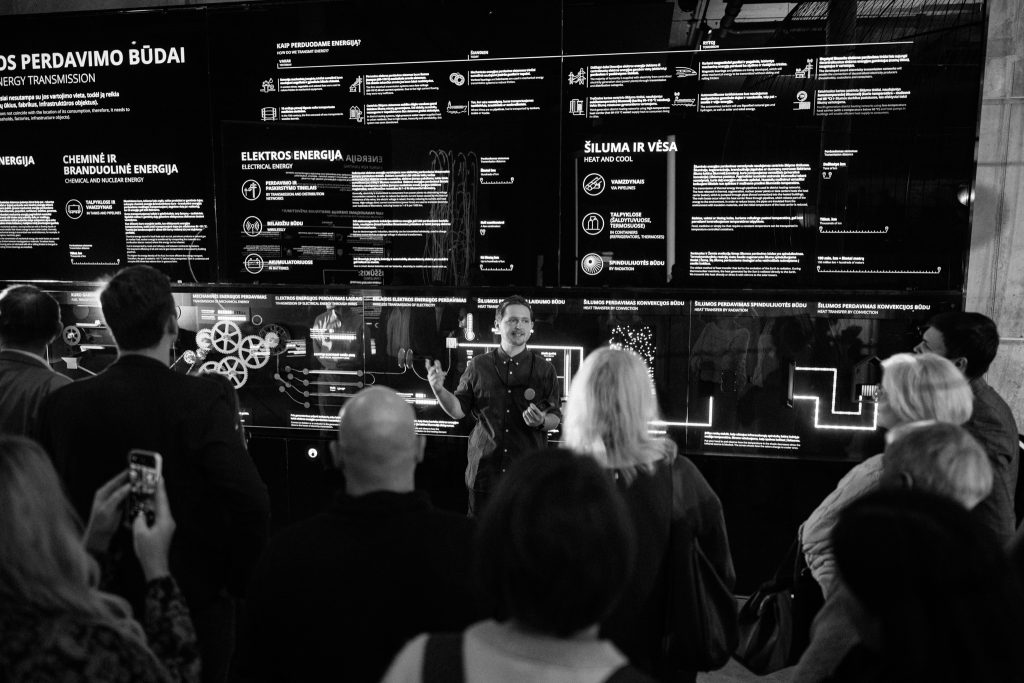

Energy, technology, physics, all this had to be retold visually and comprehensibly by the exhibition designer Sigitas Gužauskas. “The biggest challenge was the complexity of the information. To create an illustration about, for example, nuclear fission reactions, I had to open a physics textbook several times. The team was great – they sent links, sources, I was able to go from usual work to space. Comparing the physics textbook and the Transformation Hall, I would recommend visiting it,” Gužauskas said.


Through trials and errors
Interactive exhibits were created by engineer Mindaugas Talaikis and interactive equipment design and production company “Urgent Tools”. Each exhibit consists of two parts – an interactive challenge and a historical narrative. “From the beginning, the structure of the hall was well thought out: informative and interesting, interactive. Through the game, we can interest children, young people, and their parents – to reveal energy phenomena in a different way. From then on there was a lot of designing, programming, trial and error,” Talaikis said.
According to the engineer, in order for cultural institutions to be visited, they will have to be renewed in the future. “We are surrounded by a large flow of information, disturbances. If adults come to the museum out of habit, out of a desire to learn, we still have to invite children and “hook” them with engaging content. Renewal will be inevitable for all museums,” he was convinced.
The project is financed from the European Union Regional Development Fund and the budget of Vilnius City Municipality.
Partner: #EnergySmartSTART powered by “Ignitis Group”
Information partner: LRT

